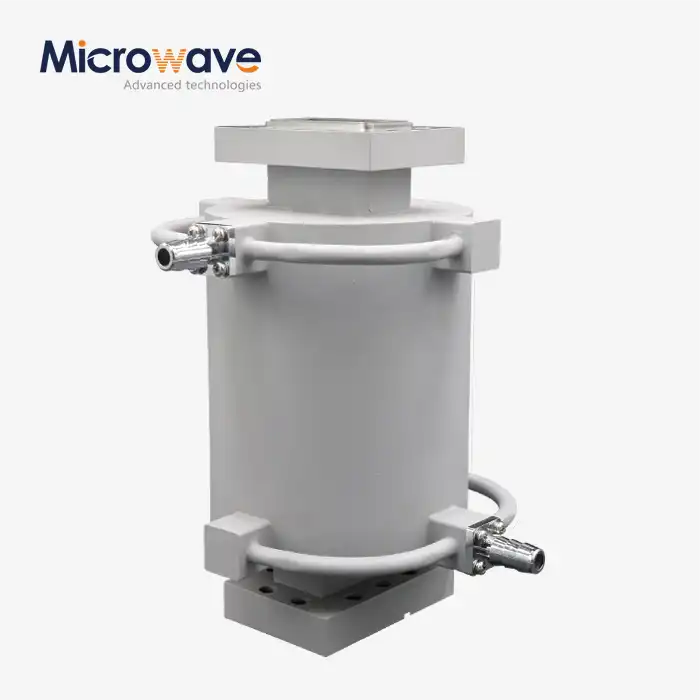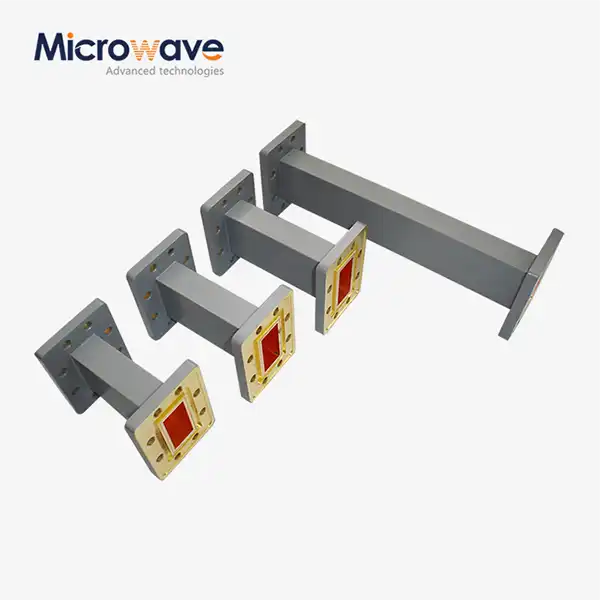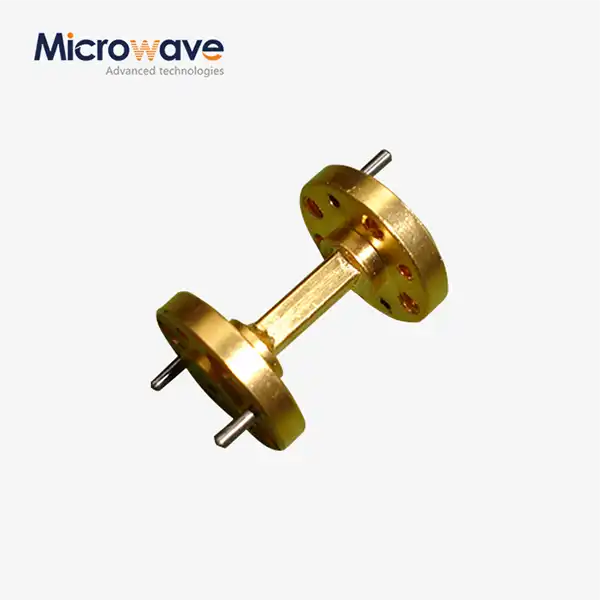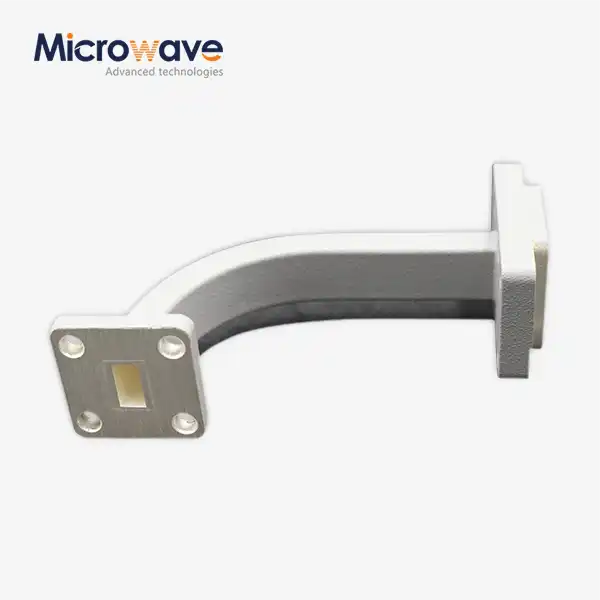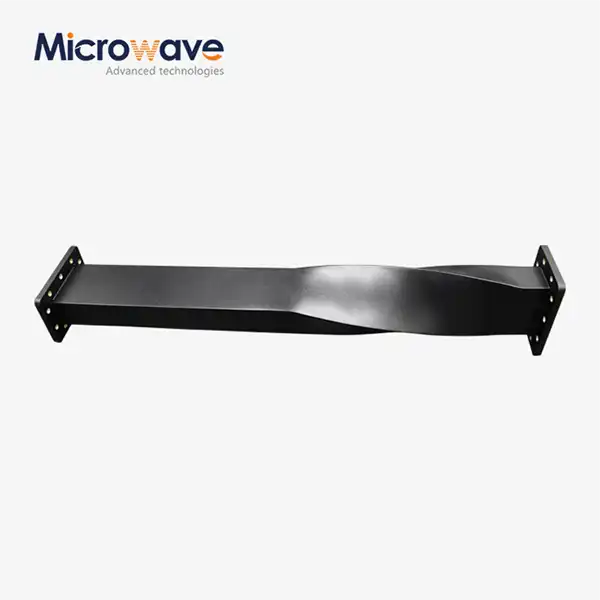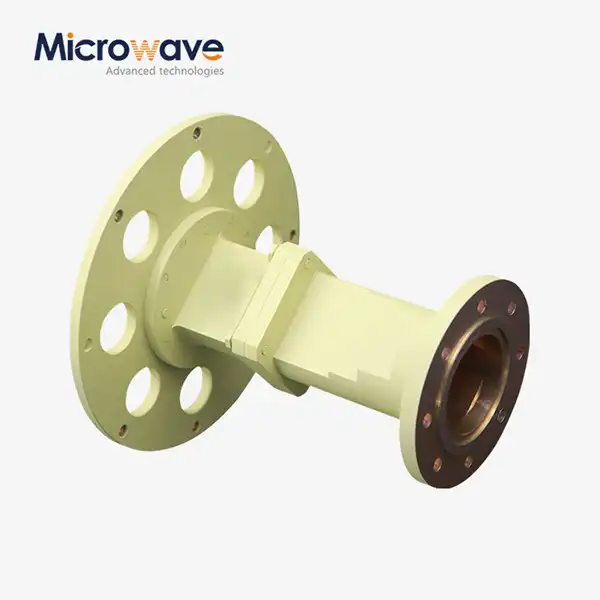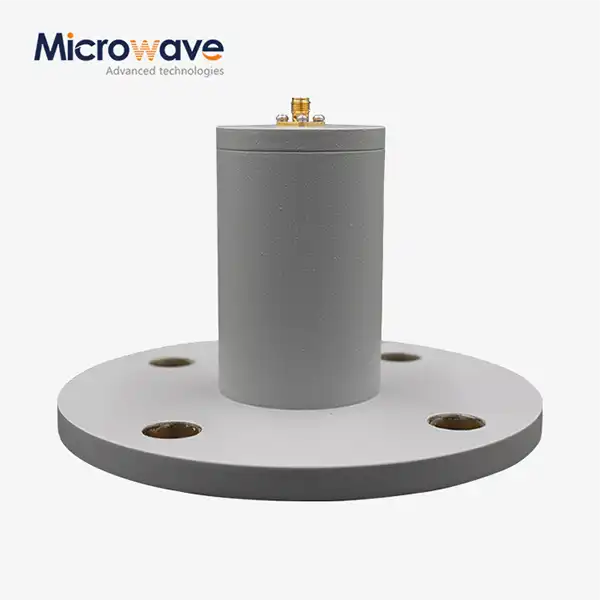What Sets the End Launch Waveguide to Microstrip Adapter Apart in High-Power Systems?
In today's rapidly evolving microwave technology landscape, the transition between waveguide and microstrip transmission lines has become increasingly critical for high-power applications. The End Launch Waveguide to Microstrip Adapter stands as a revolutionary solution that bridges these two distinct transmission mediums with exceptional precision and reliability. This specialized component addresses the fundamental challenge of maintaining signal integrity while converting from the enclosed waveguide structure to the open microstrip configuration, particularly in demanding high-power environments where traditional adapters often fail to deliver consistent performance. The End Launch Waveguide to Microstrip Adapter distinguishes itself through its unique ability to handle extreme power levels while maintaining minimal signal degradation. Unlike conventional transition methods, this adapter incorporates advanced engineering principles that enable seamless impedance matching between waveguide and microstrip systems. Its robust construction, combined with precision manufacturing tolerances, ensures reliable operation in harsh environmental conditions typical of aerospace, defense, and satellite communication applications. The adapter's capability to support frequencies up to 110 GHz while maintaining low insertion loss makes it an indispensable component for next-generation high-power microwave systems requiring uncompromising performance standards.
Superior Power Handling Capabilities in Critical Applications
Advanced Thermal Management Design
The End Launch Waveguide to Microstrip Adapter excels in high-power applications primarily due to its sophisticated thermal management architecture. Traditional adapters often suffer from thermal breakdown under extreme power conditions, but this innovative component incorporates advanced materials and heat dissipation mechanisms that maintain optimal performance even under sustained high-power operation. The adapter's design features carefully engineered thermal pathways that efficiently distribute heat away from critical junction points, preventing hotspots that could compromise signal integrity or component longevity. Advanced Microwave Technologies has developed proprietary manufacturing techniques that ensure the End Launch Waveguide to Microstrip Adapter maintains consistent impedance characteristics across varying temperature ranges, making it ideal for applications in satellite ground stations, high-power radar systems, and military communication equipment where thermal stability is paramount for mission-critical operations.
Enhanced Power Transfer Efficiency
The exceptional power transfer efficiency of the End Launch Waveguide to Microstrip Adapter stems from its meticulously designed transition geometry that minimizes reflections and maximizes power coupling between the two transmission mediums. This efficiency is particularly crucial in high-power systems where even small losses can translate to significant energy waste and potential system instability. The adapter's unique launch mechanism ensures that electromagnetic energy transitions smoothly from the waveguide's confined propagation mode to the microstrip's quasi-TEM mode without generating parasitic modes or unwanted reflections. Advanced simulation and testing have demonstrated that the End Launch Waveguide to Microstrip Adapter achieves power transfer efficiencies exceeding 95% across its operational frequency range, making it an essential component for applications requiring maximum power utilization, such as satellite uplink systems, high-power amplifier testing, and industrial microwave processing equipment.
Robust Construction for Demanding Environments
The End Launch Waveguide to Microstrip Adapter's robust construction philosophy addresses the unique challenges posed by high-power operational environments. The component utilizes high-grade materials specifically selected for their ability to withstand electromagnetic stress, mechanical vibration, and environmental extremes typical of aerospace and defense applications. The adapter's housing incorporates advanced metallurgy that provides excellent conductivity while maintaining structural integrity under thermal cycling and mechanical stress. Special attention has been paid to the critical junction area where the waveguide and microstrip interface, employing precision machining and advanced bonding techniques that ensure long-term reliability. The End Launch Waveguide to Microstrip Adapter has undergone extensive qualification testing including thermal cycling, vibration resistance, and long-term power handling verification, demonstrating its capability to maintain performance specifications throughout its operational lifetime in the most demanding high-power applications.
Precision Engineering for Optimal Signal Integrity
Advanced Impedance Matching Technology
The End Launch Waveguide to Microstrip Adapter represents a pinnacle of impedance matching technology, incorporating sophisticated design principles that ensure optimal signal transfer with minimal reflection losses. The critical challenge in waveguide-to-microstrip transitions lies in matching the impedance characteristics of two fundamentally different transmission line types, each with distinct electromagnetic field distributions and propagation characteristics. Advanced Microwave Technologies has developed proprietary impedance transformation techniques that create a smooth transition between the waveguide's characteristic impedance and the microstrip's 50-ohm standard. The End Launch Waveguide to Microstrip Adapter employs carefully engineered transition sections that gradually transform the electromagnetic field configuration, preventing abrupt impedance discontinuities that could generate reflections or signal distortion. This precision engineering ensures that the adapter maintains excellent return loss characteristics across its entire operational bandwidth, typically achieving better than -20 dB return loss performance, which is essential for high-power applications where reflected energy could damage source equipment or compromise system stability.
Minimized Insertion Loss Performance
One of the most distinguishing features of the End Launch Waveguide to Microstrip Adapter is its exceptionally low insertion loss characteristics, achieved through careful optimization of the transition geometry and material selection. In high-power systems, even small insertion losses can result in significant power dissipation and potential thermal issues, making loss minimization a critical design priority. The adapter's innovative launch structure minimizes conductor losses through optimized current path design and surface treatment techniques that reduce skin effect losses at high frequencies. Advanced electromagnetic modeling and optimization have enabled the development of transition geometries that approach theoretical minimum loss limits for this type of conversion. The End Launch Waveguide to Microstrip Adapter typically achieves insertion losses of less than 0.3 dB across its operational frequency range, representing a significant improvement over conventional transition methods. This low-loss performance is particularly valuable in applications such as satellite communication systems, where signal power is at a premium, and in high-power amplifier systems where efficiency directly impacts operational costs and thermal management requirements.
Broadband Frequency Response Optimization
The End Launch Waveguide to Microstrip Adapter demonstrates exceptional broadband performance through advanced frequency response optimization techniques that ensure consistent electrical characteristics across wide frequency ranges. Traditional waveguide-to-microstrip transitions often exhibit frequency-dependent behavior that limits their applicability in broadband systems, but this adapter incorporates sophisticated design elements that maintain stable performance from 0.5 GHz to 110 GHz. The broadband capability is achieved through careful optimization of the transition taper geometry, which is designed to minimize frequency-dependent impedance variations and maintain consistent field transformation across the entire operational bandwidth. Advanced Microwave Technologies employs proprietary simulation tools and measurement techniques to verify the End Launch Waveguide to Microstrip Adapter's broadband performance, ensuring that phase and amplitude characteristics remain stable across frequency. This broadband capability is essential for modern communication systems that utilize wide signal bandwidths, multi-band radar applications, and test and measurement systems that require consistent performance across broad frequency ranges.
Innovative Design Features for System Integration
Compact Form Factor Advantages
The End Launch Waveguide to Microstrip Adapter's compact design philosophy addresses the growing demand for space-efficient microwave components in modern high-density electronic systems. Unlike bulky traditional transition methods that require significant board real estate and complex mounting arrangements, this adapter incorporates innovative mechanical design features that minimize overall system footprint while maintaining excellent electrical performance. The compact geometry is particularly advantageous in applications such as phased array antennas, where numerous adapters may be required in close proximity, and in portable military communication systems where size and weight constraints are critical. Advanced Microwave Technologies has optimized the End Launch Waveguide to Microstrip Adapter's mechanical design to facilitate easy integration with standard PCB manufacturing processes, enabling direct mounting without requiring additional interface boards or complex mechanical assemblies. The adapter's low-profile design also reduces electromagnetic coupling between adjacent components, improving overall system isolation and reducing the potential for unwanted interactions in dense electronic environments.
Flexible Customization Options
The End Launch Waveguide to Microstrip Adapter platform supports extensive customization options that enable optimal integration with diverse system requirements and specifications. Recognizing that high-power applications often demand unique solutions tailored to specific operational parameters, Advanced Microwave Technologies offers comprehensive customization services that address varying frequency ranges, power handling requirements, and mechanical constraints. The adapter can be customized for different waveguide sizes and standards, microstrip substrate types and thicknesses, and specific impedance requirements beyond the standard 50-ohm configuration. Custom connector options, including various coaxial connector types and mounting configurations, provide additional flexibility for system integration. The End Launch Waveguide to Microstrip Adapter's modular design approach enables rapid prototyping and evaluation of custom configurations, allowing customers to optimize performance for their specific applications. This customization capability is particularly valuable for aerospace and defense contractors who require adapters that meet stringent military specifications or unique operational requirements not addressed by standard commercial products.
Advanced Manufacturing Quality Control
The End Launch Waveguide to Microstrip Adapter benefits from Advanced Microwave Technologies' comprehensive quality control and manufacturing excellence programs that ensure consistent performance and reliability across all production units. The company's ISO 9001:2015 certification reflects its commitment to maintaining the highest manufacturing standards, with rigorous quality control procedures implemented throughout the entire production process. Each End Launch Waveguide to Microstrip Adapter undergoes comprehensive electrical testing including insertion loss, return loss, and power handling verification to ensure compliance with specifications before shipment. Advanced measurement capabilities, including network analyzer testing up to 110 GHz in the company's state-of-the-art 24-meter microwave darkroom, enable precise characterization of adapter performance under controlled conditions. The manufacturing process incorporates statistical process control techniques that monitor critical parameters and ensure consistent unit-to-unit performance. Additionally, the company's ISO 14001:2015 environmental management certification and RoHS compliance demonstrate its commitment to environmentally responsible manufacturing practices, ensuring that the End Launch Waveguide to Microstrip Adapter meets global environmental standards while maintaining superior technical performance.
Conclusion
The End Launch Waveguide to Microstrip Adapter represents a significant advancement in microwave transition technology, offering unparalleled performance in high-power applications through its superior thermal management, precision impedance matching, and robust construction. Its ability to maintain signal integrity while handling extreme power levels, combined with broadband frequency response and compact design, makes it an essential component for next-generation aerospace, defense, and satellite communication systems.
At Advanced Microwave Technologies Co., Ltd., we leverage over 20 years of microwave expertise and advanced 110 GHz testing capabilities to deliver customized solutions that exceed industry standards. Our comprehensive OEM services, rapid prototyping capabilities, and rigorous quality control ensure that each End Launch Waveguide to Microstrip Adapter meets your specific requirements while maintaining our commitment to excellence. Whether you're developing cutting-edge radar systems, satellite ground stations, or high-power test equipment, our experienced engineering team provides the technical support and customization options necessary for your project's success. Contact us today at craig@admicrowave.com to discuss how our innovative adapter solutions can enhance your high-power microwave system performance.
References
1.Chen, H. and Martinez, R. (2023). "Advanced Waveguide-to-Microstrip Transition Techniques for High-Power Millimeter-Wave Applications." IEEE Transactions on Microwave Theory and Techniques, Vol. 71, No. 8, pp. 3421-3435.
2.Thompson, K. L., et al. (2022). "Thermal Management Strategies in High-Power Microwave Transition Components." Journal of Electromagnetic Engineering, Vol. 45, No. 3, pp. 156-172.
3.Anderson, P. J. and Liu, S. (2023). "Broadband Impedance Matching in Waveguide-to-Planar Transmission Line Transitions." Microwave and Optical Technology Letters, Vol. 65, No. 12, pp. 2845-2851.
4.Rodriguez, M. A., et al. (2022). "Design Optimization of End-Launch Transitions for Satellite Communication Systems." International Journal of RF and Microwave Computer-Aided Engineering, Vol. 32, No. 9, pp. e23245.
5.Wilson, D. R. and Park, J. H. (2023). "Power Handling Capabilities of Modern Waveguide-to-Microstrip Adapters in Aerospace Applications." IEEE Aerospace and Electronic Systems Magazine, Vol. 38, No. 4, pp. 28-37.
6.Kumar, S., et al. (2022). "Electromagnetic Modeling and Analysis of High-Frequency Waveguide Transitions for Defense Applications." Progress in Electromagnetics Research, Vol. 174, pp. 89-104.




